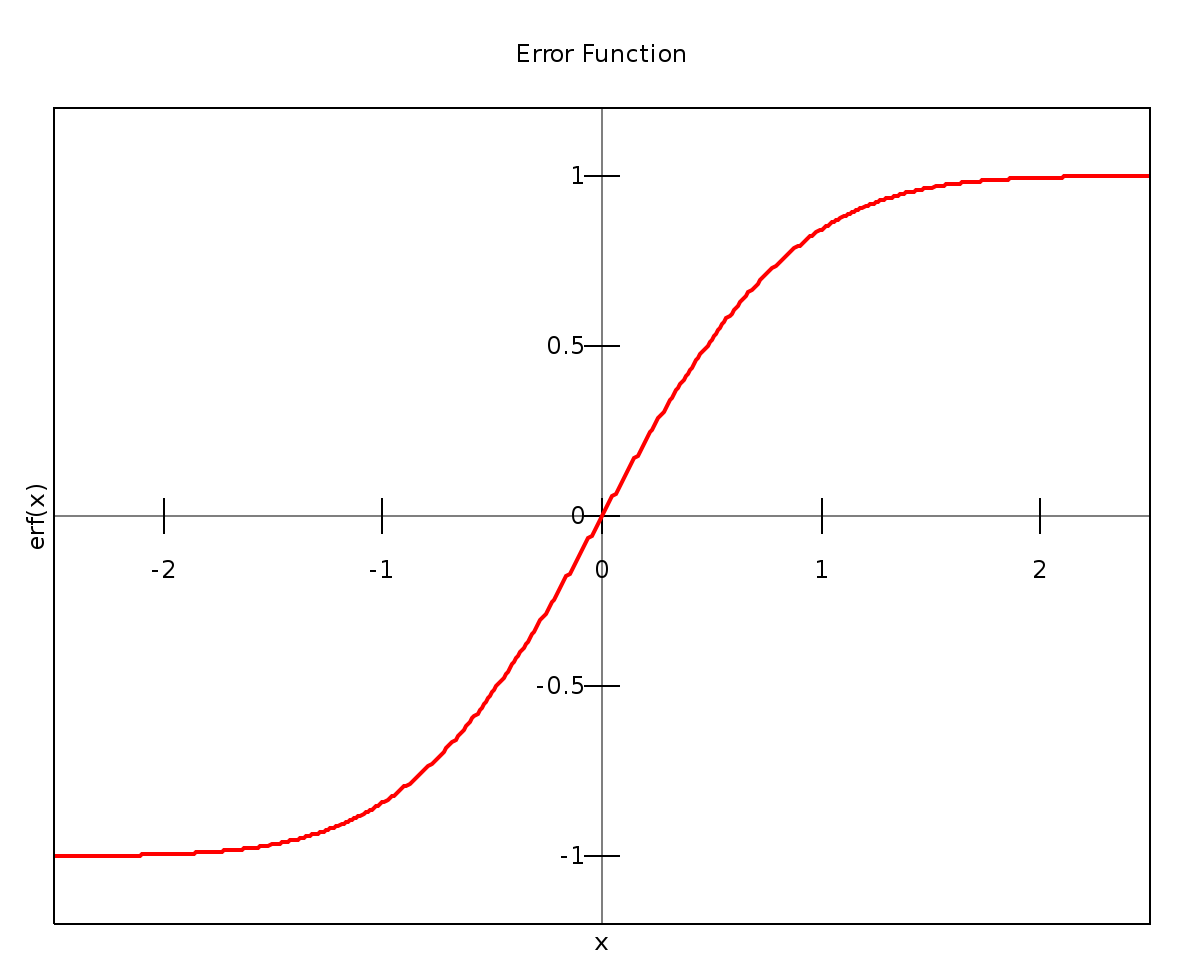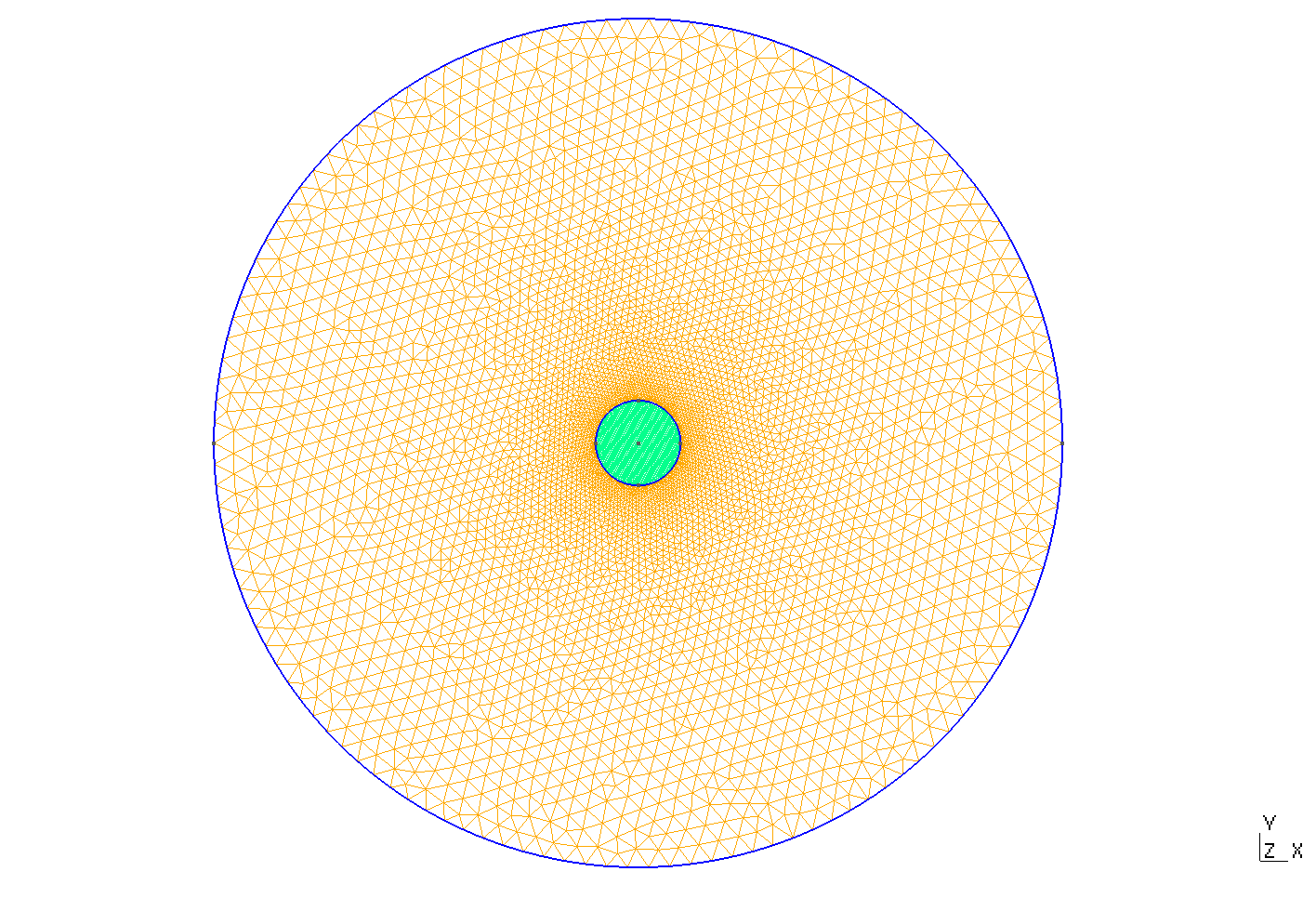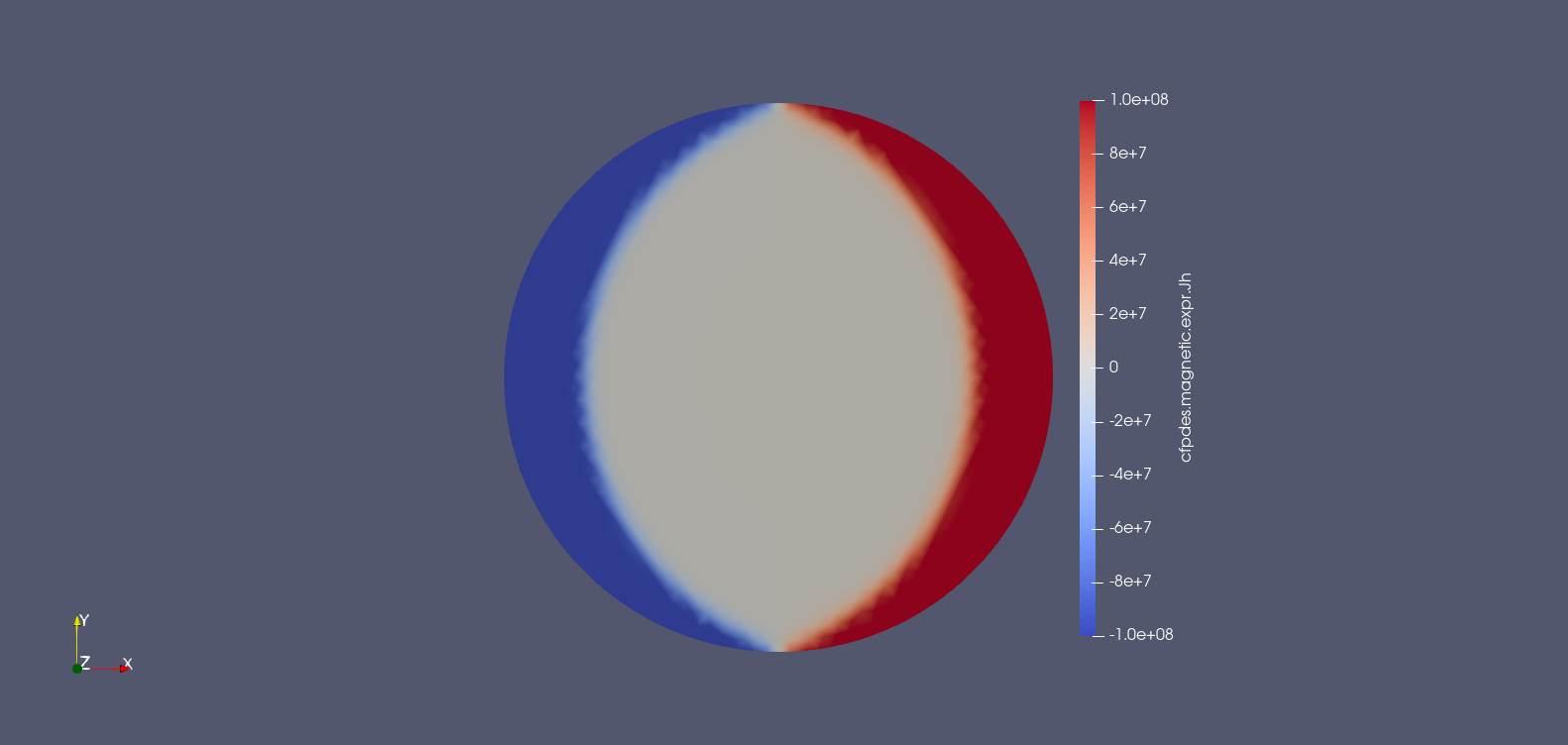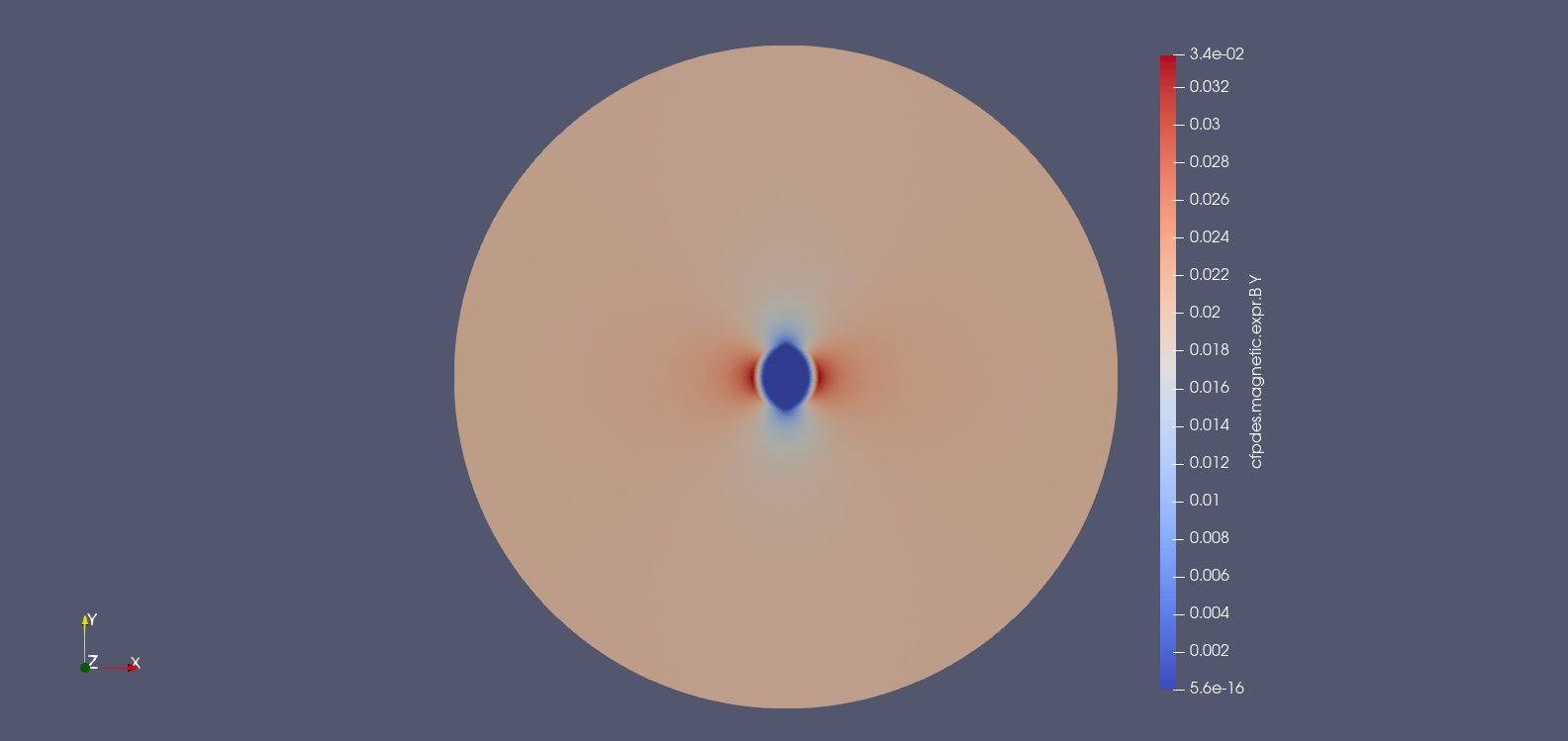Test Case : Feelpp CFPDEs - Magnetostatic HTS with erf
1. Introduction
This is the test case of High-Temperature Superconductors with the A-V Formulation and Gauge Condition on a bulk cylinder geometry surrounded by air in 2D coordinates.
2. Run the Calculation
The command line to run this case is :
mpirun -np 16 feelpp_toolbox_coefficientformpdes --config-file=mqs_erf.cfg --cfpdes.solver=Picard --cfpdes.verbose_solvertimer=1
This simulation uses the last version 109 of Feelpp.
3. Data Files
The case data files are available in Github here :
-
CFG file - Edit the file
-
JSON file - Edit the file
-
GEO file - Edit the file
4. Equation
With :
-
\(A_{z}\) : \(z\) component of potential magnetic field
-
\(J=J_c \text{erf}\left(\frac{-A_z}{A_r}\right)\) : current density \(A/m^2\)
-
\(\mu\) : electric permeability \(kg/A^2/S^2\)
5. Geometry
The geometry is a circle in 2D coordinates \((x,y)\) representing a bulk cylinder, surrounded by air.

Geometry
|
The geometrical domains are :
-
Conductor: the cylinder -
Air: the air surroundingConductor-
Infty: theAir's boundary
-
Symbol |
Description |
value |
unit |
\(R\) |
radius of cylinder |
\(0.001\) |
m |
\(R_{inf}\) |
radius of infty border |
\(0.01\) |
m |
6. Parameters
The parameters of the problem are :
-
On
Conductor:
Symbol |
Description |
Value |
Unit |
\(\mu=\mu_0\) |
magnetic permeability of vacuum |
\(4\pi.10^{-7}\) |
\(kg \, m / A^2 / S^2\) |
\(A_r\) |
parameter resulting from the combination of \(E_0\) and the time it takes to reach the peak of AC excitation |
\(1.10^{-7}\) |
\(Wb/m\) |
\(b_{ext}\) |
external applied field |
\(0.02\) |
\(T\) |
\(J_c\) |
critical current density |
\(1.10^8\) |
\(A/m^2\) |
The error function erf is defined by :

|
This function is not implemented on feelpp, so we use a fit on a .csv with a large panel of values calculated with the function.
-
On
Air:
Symbol |
Description |
Value |
Unit |
\(\mu=\mu_0\) |
magnetic permeability of vacuum |
\(4\pi.10^{-7}\) |
\(kg \, m / A^2 / S^2\) |
On JSON file, the parameters are written :
"Parameters":
{
"mu":"4*pi*1e-7",
"A_r":1e-7,
"Bext":0.02,
"jc":1e8,
"erf": {
"type":"fit",
"filename":"$cfgdir/erf.csv",
"abscissa":"X",
"ordinate":"Erf",
"interpolation":"P1",
"expr":"-magnetic_A/A_r:magnetic_A:A_r"
}
},
7. Boundary Conditions
For the Dirichlet boundary conditions, we want to impose the applied magnetic field :
We have \(B_{ext}=0.02 T\), and in 2D Cartesian coordinates, \(B=\nabla\times A\) becomes \(B_x=\partial A/\partial y\) and \(B_y=-\partial A/\partial x\). So in order to obtain a magnetic field \(B_{ext}\) along \(y\), it is sufficient to impose \(A_z=-xB_{ext}\).
Finally we have :
-
On
Infty: \(A = -x B_{ext}\)
On JSON file, the boundary conditions are written :
"BoundaryConditions":
{
"magnetic":
{
"Dirichlet":
{
"magdir":
{
"markers":["Infty"],
"expr":"-x*Bext:x:Bext"
}
}
}
},
8. Weak Formulation
9. Coefficient Form PDEs
The Feelpp toolboxe Coefficient Form PDEs is used here. The coefficients associated to the Weak Formulation are :
-
On
Conductor:
Coefficient |
Description |
Expression |
\(c\) |
diffusion coefficient |
\(1\) |
\(f\) |
source term |
\(\mu J_c \text{erf}\left(\frac{-A}{A_r}\right)\) |
The bilinear form was formulated as a non-linear problem, which in CFPDES requires the source term to be multiplied by the unknown A. Hence, for the sake of consistency with the model, the source term is written as a reaction coefficient and multiplied by the term \((1/A)\). If \(A=0\), the source term is multiplied by 1, that’s why a notzero parameter is introduced.
Coefficient |
Description |
Expression |
\(c\) |
diffusion coefficient |
\(1\) |
\(a\) |
absorption or reaction coefficient |
\(-\frac{1}{A}\mu J_c \text{erf}\left(\frac{-A}{A_r}\right)\) |
-
On
Air:
Coefficient |
Description |
Expression |
\(c\) |
diffusion coefficient |
\(1\) |
On JSON file, the coefficients are written :
"Materials":
{
"Conductor":
{
"markers":["Conductor"],
"notzero":"(1/magnetic_A)^(1-(magnetic_A>-1E-100)*(magnetic_A<1E-100)):magnetic_A",
"magnetic_c":"1",
"magnetic_a":"-mu*jc*erf*notzero:mu:jc:erf:notzero"
},
"Air":
{
"markers":["Air"],
"magnetic_c":"1"
}
},
10. Mesh & Solver
-
Mesh :

Mesh of Geometry
|
-
Non-linear Solver : Picard
-
Maximum number of iterations : \(600\)
-
11. Results
The results that we obtain with this formulation with Feelpp are compared to the results of the article A numerical model to introduce student to AC loss calculation in superconductors where the finite element software FreeFEM is used.
11.1. Electric current density
The electric current density \(J\) is defined by :

Figure 1. "Electric current density \(J (A/m^2)\)
|
We compare the current density profiles with Feelpp and FreeFEM on the \(O_r\) axis, on the diameter of the cylinder, for a maximum applied field of 0.02 T.
L2 Relative Error Norm : \(3.4 \%\) |
11.2. Magnetic flux density
The magnetic flux density \(B\) is defined by:
Therefore, \(B_y\), the y-component of the magnetic flux density is defined as \(-\partial_x A\) :

Figure 2. "y-component of the magnetic flux density \(B_y (T)\)
|